|
|
|
|
Tüm Yazıları


 ShareThis ShareThis
|
Interview with Nezir İçgören
02.11.2007
Nil Şenver |
|
|
| Okunma Sayısı : |
14469 |
|
|
| Oy Sayısı : |
11 |
|
|
| Değerlendirme : |
4,27 |
|
|
| Popülarite : |
4,45 |
|
|
| Verdiğiniz Puan : |
|
|
|
|

|
|
NEZİR İÇGÖREN ile SÖYLEŞİ
Interview with Nezir İçgören
.
.
.
When did you decide to become a ceramist?
I wasn’t thinking of becoming a ceramist when I was a child. It was not a childhood dream job. I decided to become a ceramist in 1994.
How old were you then?
(He smiles) I was born in 1963. I was 31 years old when I decided to become a ceramist.
So you did not study art in the university?
No. I actually studied management in 9 Eylul University. I am from Mersin. But we came to Istanbul after I was born then I went to Izmir to study in the university. Then after getting my degree I returned to Istanbul.
How did you decide that you want to be involved in art since you studied management in the university?
My involvment in ceramics started as a hobby. When I started, I never thought that I would become a ‘ceramist’. I think that all the art forms like painting, ceramics are ‘crafts’, so even now I don’t call myself as a ceramist. For example, if someone comes and asks you to make 100 coffee cups, you shape the cup, make it and fire it. If you do these kinds of jobs then we can say that your occupation is ‘ceramist.’ Since I am not a ceramist I don’t do these kinds of jobs because I don’t think of making ceramics as an occupation. The things I do with ceramic are unique, they are not for mass production.
How do you use ceramic to express yourself?
I try to reflect my feelings, ideas and ideologies when making a ceramic.
What techniques do you use to make ceramics?
I don’t use the techniques that are taught in the university in ceramic classes since I did not study art in the university. The other ceramists use these techniques because they are used to using these when they were at school to pass the class. I think that not using these techniques is an advantage for me. Because when you are taught these techniques, you get used to using these since you had to in the university to get good grades and that limits you. Every time you use these without knowing. So I feel lucky because I think that having not studied these techniques gives me freedom to create my pieces.
You say that you have freedom because you did not study these techniques in the university. But how were you able to learn making ceramics? Did you read books? How did you develop yourself in this field?
Yes I have read books. But the books I have read were not about the techniques. I worked on ceramics until 1997. I also carved stone and wood. Then I and my friends decided to open a studio. We were three people including me and my friends were both graduated from Marmara University where they studied ceramics. We opened our studio in Cukurcuma. I learned ceramic making techniques there.
What works did you produce in that studio?
In the studio we all worked on our individual works. However, we also worked on big projects. For example we worked on a vase mat. First we shaped the mat that the company wanted then took a mould since we were going to produce great numbers from the same mat. In that time we were doing ‘the occupation of ceramic’ since we were working to produce great numbers of mats. To tell the truth, we also earned great money!
You say that you earned great money. Why did you stop working there?
We stopped because we had a dream. We wanted to go to Bodrum, open a studio and continue living there. We did go to Bodrum and opened a studio there! And now I am working both in Bodrum and in Istanbul. My friends usually stay there and I travel back and forth.
We see that you don’t have kiln here. How do you fire your works?
Well yes. For now I don’t have a kiln but in a short time I will buy one. For now, I use my friend’s kiln to fire my work. My studio in Istanbul is smaller than the one in Bodrum so I am not able to do big projects here although we were are able to work on big projects in Bodrum.
Can you talk about kilns for us?
Kilns can go up to very high degrees to fire the ceramic like 1040 centigrade. Also they should be isolated in order not to harm the environment since they are very hot. You shouldn’t open the the kiln in the process of firing to see your work but you should wait until the kiln cools down since it can hurt you physically. Also the kiln’s capacity will change according to its features.
When you said that you were going to be a ceramist….he interrupts
I didn’t say that I was going to be a ceramist and to tell the truth I don’t believe that you should say ‘I am going to be a pilot, a chemist’ or ‘I am going to do this’ before accomplishing something. It is my own personal view but I think that you should go with your feelings and the flow will eventually take you somewhere. When you go to university and study chemistry or physics they will tell you that there is one truth. For example water will freeze at 0 centigrade. However in photography, ceramics, paintings there is no one truth. When you ask a ceramist why he/she uses a certain technique he/she may not know it because we deal with feelings and ideologies.
So you don’t have a certain reason for doing ceramics?
Yes, I don’t have a certain reason. I just do it because it gives me peace. When I go home I am not able to sleep if I don’t feel peace and serenity in my heart. Making ceramics provides me with that inner peace that I want.
Do you use ceramics as a mean of communication?
Well yes exactly… Everyone wants to communicate with the outer world to exprees his/her inner world. Some people use speech, some write, some paint, some take photos and some like me make ceramics. But the important thing here is that we all want to communicate with others. I use ceramics to express my inner world.
Do your feelings reflect in your techniques and your works?
When you are doing ceramics, there can be two techniques: you plan the shapes, the color and think about the organization of the piece; or you just get some clay, put it in front of you and reflect your feelings. After some time you will have something in your hand that is shaped according to your instant feelings. I prefer to use the first technique. I use my dreams and feelings to form a plan and a technique and after careful thinking they come together to make a harmonious whole.
Can you tell about the ideas that you try to express in your artwork? Are you a realist or a romantic? Which one do you advocate: ‘art for the sake of art’ or ‘art for sake of the society’?
I think that art is neither for the sake of art nor for the sake of society. You practice art for your own self and for the sake of individuality. You use art to express your own thoughts. It doesn’t change if you sell your work or not, if you are educated or not. For example, although Nazım Hikmet was not able to sell his poems and he had to continue living with very little money, he continued to produce his poems. He continued because it comes within himself, he wrote poems for himself.
Can you talk about your works and projects?
I have been organizing an exhibition called “We Kilned the Sea” which we after named as ‘Ceracarnassos’ in Bodrum. We exhibit our works both on land and under water. The name is the combination of ‘ceramic’ and ‘halicarnassos’. The viewers can observe the works both by diving and from the surface since the water very clear. %20 percent of the works are under water. This exhibition was also opened in Berlin with 30 artists. Here there are around 74 participants.
What is the theme/technique of this exhibition?
Since we have lots of participants we had to have a theme. The purpose of CERACARNASSOS is to free art and the artist from the traditional, organized gallery environment, and allow them to intermingle with people in their daily lives—in other words, to make ceramic art a part of daily life. This way the artist will be able to express him or herself to all layers of society.
What is this organization’s purpose?
I will say just the exact things that are on the website since that is also what I wan to say: In large cities, people are regularly bombarded by information technology and the media, but are removed from art events. This makes it difficult for public awareness and interest in art to grow. Holidays are almost the only time when this regimented pattern of urban working life is interrupted. Vacations provide a window of opportunity for art—only then does it have a chance to truly connect to people. In Turkey and abroad, Bodrum has a reputation as a resort destination. With its international airport and three yacht marinas, the region is visited every year by large numbers of holiday-makers. Add to all this its mild climate and a stunning natural setting, and Bodrum is an ideal location to display art.
Do you always depict fishes or things that are related to sea in this organization?
In the first years we did depict fishes and things that are related to sea. When the organization got bigger we wrote a theme and prepared the outline for the artists who wanted to join the organization.
.
.

Nezir İçgören
1963 İçel – Tarsus’da doğdu.
1987 Dokuz Eylül Üniversitesi İktisadi ve İdari Bilimler Fakültesi ’den mezun oldu
1998 Mesut Eren atölyesinde desen çalışmaları yaptı.
2000 İFSAK Temel fotoğraf seminerine katıldı.
2001 İstanbul’da CeramiClub’ı kurdu ve seramik çalışmalarına başladı.
2002 Yıldız Teknik Üniversitesi Müzecilik yüksek lisans programına devam etti.
2003 Yunanistan Taşoz adasında Anders Peters fotoğraf atölye çalışmasına katıldı.
2004 İstanbul Stanley Greene fotoğraf atölye çalışmasına katıldı.
2004 Denizi Pişirdik Organizasyonu adına Bodrum Sualtı Arkeoloji Müzesi Haluk Elbe Sanat Galerisi’nin sanat yönetmenliğini yürütüyor.
.
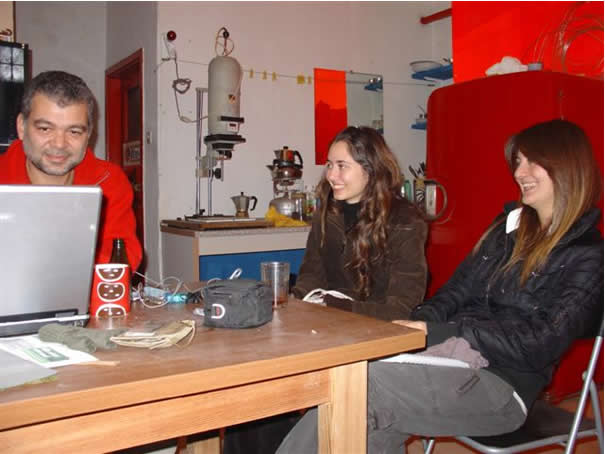
soldan sağa Nezih İÇGÖREN, Nil Şenver, Burçak Kılıçoğlu
.
.
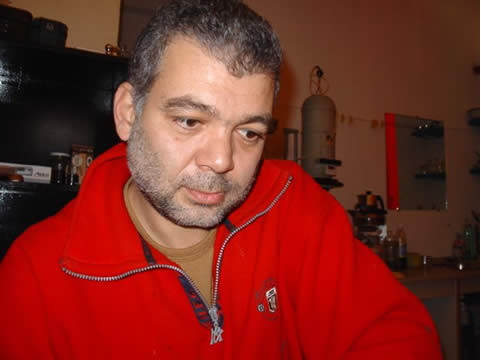
Nezir İçgören
.
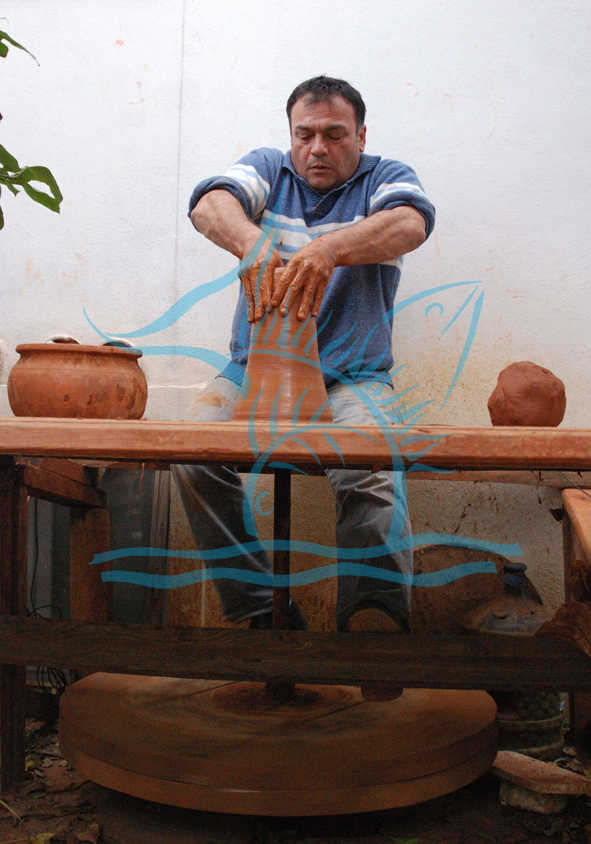
Amphora production
.
.
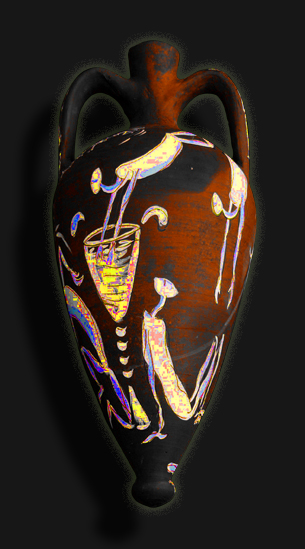
Amphora
.
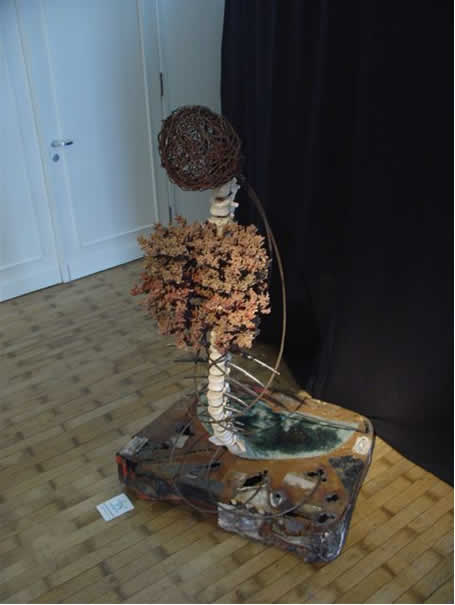
.
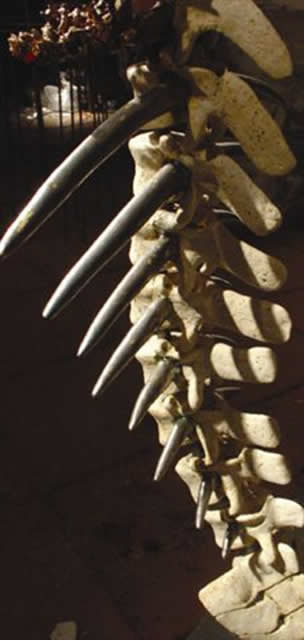
.
More information on the organization “Ceracarnassos” can be found at www.uwaw.org |
|
|
|
|
|
|
|
|
|
|
|
Tüm yazıları


 ShareThis ShareThis
|
|
|
|
|
|
|
|
|
|
|
|
Türk Liderler:
Abbas Güçlü, Adil Karaağaç, Ali Ağaoğlu, <Ali Kibar, Adnan Nas, Adnan Polat, Adnan Şenses, Ahmet Başar, Ahmet Esen, Alber Bilen ,Ahmet Cemal Kura, Ali Abalıoğlu, Ali Naci Karacan, Ali Sabancı, Ali Koç, Ali Saydam, Ali Talip Özdemir, Ali Üstay, Arman Manukyan, Arzuhan Yalçındağ, Asaf Güneri, Atila Şenol, Attila Özdemiroğlu, Avni Çelik, Ayduk Koray, Aydın Ayaydın, Aydın Boysan, Ayhan Bermek, AyşeKulin, Ayten Gökçer, Başaran Ulusoy, BedrettinDalan, Bedri Baykam, Berhan Şimşek, BetülMardin, Bülend Özaydınlı, Bülent Akarcalı, Bülent Eczacıbaşı, Bülent Şenver, CağvitÇağlar, Can Ataklı, Can Dikmen, Can Has, Can Kıraç, Canan Edipoğlu, Celalettin Vardarsuyu, Cengiz Kaptanoğlu, Cevdetİnci, Çoşkun Ural, Cüneyt Asan, Cünety Ülsever, Çağlayan Arkan, Çetin Gezgincan, DenizAdanalı, Deniz Kurtsan, Didem Demirkent, Dilek Sabancı, Dr. Oktay Duran, Ege Cansel, Em. Org. Çevik Bir, Emre Berkin, Engin Akçakoca, Enver Ören, Erdal Aksoy, Erdoğan Demirören, ErhanKurdoğlu, Erkan Mumcu, Erkut Yücaoğlu, Ergun Özakat, Ergun Özen, Erol Üçer, Ersin Arıoğlu, Ersin Faralyalı, Ersin Özince, Ethem Sancak, Fatih Altaylı, Fatih Terim, Ferit Şahenk, Ferruh Tanay,Feyhan Kalpaklıoğlu, Feyyaz Berker, Fuat Miras, Fuat Süren, Füsun Önal, Göksel Kortay, Güler Sabancı, Güngör Kaymak, Hakan Ateş, Halit Soydan, Halit Kıvanç, Haluk Okutur, Haluk Şahin, Hamdi Akın, Hasan Güleşçi, HayrettinKaraca, Hazım Kantarcı, Hilmi Özkök, Hüsamettin Kavi, Hüseyin Kıvrıkoğlu, Hüsnü Özyeğin, Işın Çelebi, İbrahim Arıkan, İbrahim Betil, İbrahim Bodur, İbrahim Cevahir, İbrahim Kefeli, İdris Yamantürk, İhsan Kalkavan, İshak Alaton, İsmet Acar, İzzet Garih, İzzet Günay, İzzet Özilhan, JakKamhi, Kazım Taşkent, Kemal Köprülü, Kemal Şahin, Leyla Alaton Günyeli, LeylaUmar, Lucien Arkas, Mahfi Eğilmez, MehmetAli Birand, Mehmet Ali Yalçındağ, Mehmet Başer, Mehmet Günyeli, Mehmet Huntürk, Mehmet Keçeciler, Mehmet Kutman, Mehmet Şuhubi, Melih Aşık, Meltem Kurtsan, Mesut Erez, Metin Kalkavan, Metin Kaşo, Muharrem Kayhan, Muhtar Kent, Murat Akdoğan, Murat Dedeman, MuratVargı, Mustafa Koç, Mustafa Özyürek, Mustafa Sarıgül, Mustafa Süzer, Mümtaz Soysal, Nafi Güral, Nail Keçili, Nasuh Mahruki, Nebil Özgentürk, Neşe Erberk, Nevval Sevindi, Nezih Demirkent, Nihat Boytüzün, Nihat Gökyiğit, Nihat Sırdar, Niyazi Önen, Nur Ger, Nurettin Çarmıklı, Nuri Çolakoğlu, Nüzhet Kandemir, Oğuz Gürsel, Oktay Duran, Oktay Ekşi, Oktay Varlıer, Osman Birsel, Osman Şevket Çarmıklı, Ozan Diren, Özen Göksel, ÖzdemirErdoğan, Özhan Erem, Pervin Kaşo, R.BülentTarhan, Raffi Portakal, Rahmi Koç, Rauf Denktaş, Refik Baydur, Rıfat Hisarcıklıoğlu, SakıpSabancı, Samsa Karamehmet, Savaş Ünal, SedatAloğlu, Sefa Sirmen, Selçuk Alagöz, SelçukYaşar, Selim Seval, Semih Saygıner, SerdarBilgili, Sevan Bıçakçı, Sevgi Gönül, Sezen Cumhur Önal, SinanAygün, Suna Kıraç, Süha Derbent, Süleyman Demirel, ŞadanKalkavan, Şadi Gücüm, Şahin Tulga, Şakir Eczacıbaşı, Şarık Tara, Şerif Kaynar, ŞevketSabancı, Tan Sağtürk, Taner Ayhan, Tanıl Küçük, Tanju Argun, Tansu Yeğen, TavacıRecep Usta, Tayfun Okter, Tevfik Altınok, Tezcan Yaramancı, Tinaz Titiz, Tuna Beklevic, Tuncay Özilhan, Türkan Saylan, Uğur Dündar, Uluç Gürkan, Umur Talu, Ümit Tokçan, Üzeyir Garih, Vehbi Koç, Vitali Hakko, Vural Öger, Yaşar Aşçıoğlu, Yaşar Nuri Öztürk, Yılmaz Ulusoy, Yusuf Köse, Zafer Çağlayan, Zeynel AbidinErdem
|
|
|